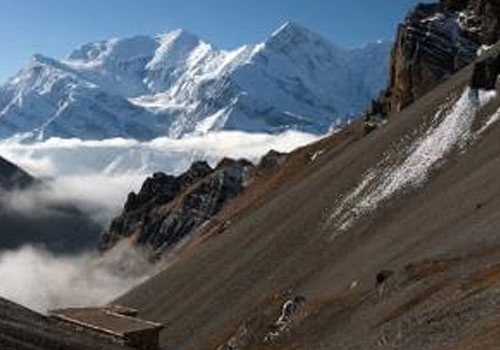The Everest Base Camp Trek is a legendary adventure that captures the imagination of trekkers from around the globe. It’s more than just a walk through the mountains; it’s a pilgrimage to the foot of the world’s highest peak—Mount Everest. With breathtaking vistas, rich Sherpa culture, and the thrill of high-altitude trekking, the trek to Everest Base Camp is a dream for many.
This article explores everything you need to know about Everest Base Camp Treks, including what to expect, the experience of trekking to Everest Base Camp, and up-to-date details on the Everest Base Camp Trek cost for 2025 and 2026.
Introduction to Everest Base Camp Trek
The Everest Base Camp Trek (EBC Trek) takes adventurers into the heart of the Khumbu region in Nepal, where towering peaks surround lush valleys and ancient monasteries. Located at an altitude of 5,364 meters (17,598 feet), Everest Base Camp is the launching point for mountaineers attempting to scale the summit of Mount Everest.
From the very beginning, the trek to Everest Base Camp is an awe-inspiring experience. Starting with a scenic flight from Kathmandu to Lukla, the journey passes through traditional Sherpa villages like Namche Bazaar, Tengboche, and Dingboche. Trekkers walk alongside glacial rivers, over swinging suspension bridges, and under the shadows of giants like Lhotse, Nuptse, Ama Dablam, and of course, Everest itself.
Why Choose the Everest Base Camp Trek?
1. Legendary Landscape
Few places on Earth offer such dramatic alpine scenery. The landscapes are ever-changing—from dense pine forests and river valleys to barren glacial moraines.
2. Cultural Experience
The trek provides a deep dive into Sherpa culture. Visiting monasteries, prayer wheels, and mani stones offers insight into Tibetan Buddhism’s presence in the region.
3. The Everest Base Camp Milestone
Standing at the base of Everest is a badge of honor for adventurers. It’s not about reaching the summit—it’s about being part of the legacy of exploration.
4. Sense of Accomplishment
With challenging terrain, thin air, and long days of hiking, trekking to Everest Base Camp is a physical and mental achievement you’ll never forget.
Popular Routes and Itinerary
A standard Everest Base Camp Trek typically takes 12 to 14 days, depending on acclimatization and side trips.
Classic 14-Day Itinerary:
- Day 1: Kathmandu to Lukla flight, trek to Phakding
- Day 2: Trek to Namche Bazaar
- Day 3: Acclimatization day in Namche
- Day 4: Trek to Tengboche
- Day 5: Trek to Dingboche
- Day 6: Acclimatization in Dingboche
- Day 7: Trek to Lobuche
- Day 8: Trek to Everest Base Camp and back to Gorak Shep
- Day 9: Hike to Kala Patthar (5,545m) for sunrise, then trek down to Pheriche
- Day 10: Trek to Namche Bazaar
- Day 11: Trek to Lukla
- Day 12: Fly back to Kathmandu
Alternate itineraries may include Gokyo Lakes, Three High Passes, or helicopter returns.
Everest Base Camp Trek Cost for 2025 and 2026
One of the most common questions from adventurers is: “What is the cost of the Everest Base Camp Trek in 2025 or 2026?” The answer depends on the trekking style—guided group, independent trekker, or luxury tour.
1. Standard Guided Trek Package (14 Days)
- Cost in 2025: $1,200 – $1,600 USD
- Cost in 2026: $1,300 – $1,700 USD (prices may rise due to inflation and permit fee adjustments)
Includes:
- Airport pickup/drop
- Domestic flights (Kathmandu–Lukla–Kathmandu)
- Three meals per day during trek
- Licensed guide and porter
- Trekking permits (TIMS, Sagarmatha National Park Entry)
- Accommodation in tea houses
- Basic first aid support
2. Luxury Everest Base Camp Trek
- Cost in 2025: $2,500 – $4,000 USD
- Cost in 2026: $2,700 – $4,500 USD
Includes better accommodations, helicopter return options, experienced guides, and gourmet meals.
3. Independent Trekking
- Budget estimate: $800 – $1,200 USD (without guide or porter)
Breakdown:
- Lukla flight: ~$300
- Permits: ~$50
- Accommodation: $5–$20 per night
- Meals: $25–$40/day
- Misc: Wi-Fi, charging, tips, snacks
Hiring a porter ($20/day) and guide ($30/day) adds cost but enhances safety and comfort.
Permits Required for Everest Base Camp Treks
You’ll need the following permits for a trek to Everest Base Camp:
- Khumbu Pasang Lhamu Rural Municipality Permit – NPR 2,000 (~$15)
- Sagarmatha National Park Entry Permit – NPR 3,000 (~$25)
These permits can be arranged through trekking agencies or purchased at entry checkpoints.
Best Time to Trek to Everest Base Camp
Spring (March to May)
- Rhododendron forests bloom
- Clear skies and moderate temperatures
- Ideal for photography and vibrant scenery
Autumn (September to November)
- Stable weather and high visibility
- Most popular season; expect crowds
Winter (December to February)
- Fewer trekkers, more peace
- Cold and snow may block passes
Monsoon (June to August)
- Not ideal due to rain and landslides
- Lukla flights often delayed
Accommodations and Meals
Most trekkers stay in tea houses—basic lodges with twin-sharing rooms, shared bathrooms, and hearty meals. As you gain altitude, accommodation becomes more rustic, and food prices rise due to transport costs.
Typical menu items:
- Dal Bhat (lentils and rice)
- Noodles, pasta, and fried rice
- Pancakes and porridge
- Tibetan bread and eggs
Bottled water is available, but using purification tablets or filters saves money and reduces plastic use.
Physical Preparation for the Trek
Though not a technical climb, trekking to Everest Base Camp demands stamina and mental toughness.
Training tips:
- Hike regularly with a backpack
- Cardio workouts (running, stair climbing)
- Practice on trails with elevation
- Break in hiking boots before the trek
Altitude sickness is a serious risk—acclimatization days are vital, and trekkers should be aware of symptoms like headaches, nausea, and dizziness.
Everest Base Camp Trek Highlights
- Flight to Lukla Airport, one of the world’s most thrilling airstrips
- Namche Bazaar, the bustling Sherpa capital
- Tengboche Monastery, a spiritual stop with panoramic views
- Kala Patthar sunrise, the best close-up view of Everest
- Standing at Everest Base Camp, among colorful prayer flags and climbers preparing for the summit
Tips for First-Time Trekkers
- Pack light but smart: Layers, windproof gear, and good shoes are essential.
- Go slow: Rushing increases the risk of altitude sickness.
- Stay hydrated: Drink 3–4 liters daily.
- Carry snacks: High-energy food helps on long trail days.
- Respect local culture: Dress modestly and follow Sherpa customs.
Environmental and Ethical Considerations
The Khumbu region faces the challenges of over-tourism and waste. To tread lightly:
- Use refillable bottles
- Avoid single-use plastics
- Pack out trash
- Support eco-conscious lodges
Hiring local guides and porters also supports the regional economy and enhances your trekking experience.
Conclusion: Is the Everest Base Camp Trek Worth It?
Absolutely. Whether you’re a seasoned trekker or a first-timer chasing your dream, the Everest Base Camp Trek is a life-defining journey. From unforgettable landscapes to heartwarming encounters with locals, this trek offers both challenge and reward.
If you’re planning your adventure, start early—especially for 2025 and 2026—when demand is high. The Everest Base Camp trekking cost is reasonable for the experience you gain. Choose your style, prepare properly, and step confidently toward the mighty Everest.
FAQs
Q1: How difficult is the Everest Base Camp Trek?
It’s a moderate to strenuous trek. No climbing is involved, but altitude, long distances, and basic amenities can be challenging.
Q2: Can beginners do the trek?
Yes, with preparation and proper acclimatization. Hiring a guide is strongly recommended for first-time trekkers.
Q3: Is Wi-Fi available?
Yes, in most lodges (paid). Everest Link cards are commonly used for internet.
Q4: Do I need travel insurance?
Absolutely. Make sure it includes emergency evacuation coverage.
Contact to welcome nepal treks:
You Can contact welcome nepal treks by using our email address info@welcomenepaltreks.com . We are available at any time.welcome nepal treks will deliver you price-worthy services, professional guides, trained staff, and assistance on every trip.

